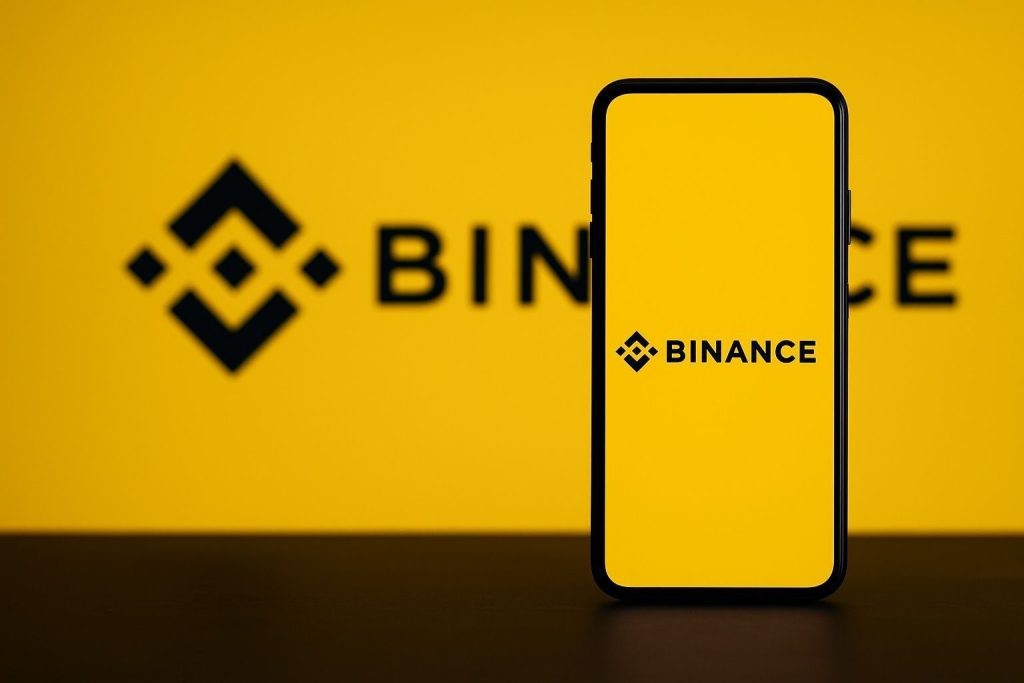On Wednesday, November 26, 2025, Solana (SOL) is consolidating just under the $140 mark while the network sits at the center of three big storylines: a powerful streak of ETF inflows, a controversial proposal to slash future token issuance, and fresh security and DeFi developments that keep Solana firmly in the spotlight.
Solana price today: SOL stabilizes around $139 after steep November slide
As of today, multiple market data providers put Solana’s price in roughly the $138–$140 range, with one widely cited benchmark showing $139.01 for November 26, 2025, up slightly from yesterday’s close around $138.37. [1]
In the last 24 hours, Solana has gained around 1–2%, making it one of the stronger performers among large-cap altcoins on the day. [2]
Zooming out, the picture is much choppier:
- SOL is down roughly 26–31% over the past month, sliding from the $180–$190 zone in early November to the mid‑$130s today. [3]
- It trades about 40% lower than a year ago, and roughly 50% below its January 2025 all‑time high near $293. [4]
- 24‑hour spot volume is still elevated at around $5 billion, signaling that, despite the correction, Solana remains one of the most actively traded large‑cap crypto assets. [5]
Technically, analysts are watching a cluster of levels:
- The $140 region is acting as near‑term resistance and a psychological pivot; holding above it could open a path toward $150–$160 if momentum improves. [6]
- On the downside, the $128–$130 band is widely cited as the next support zone, with some technical research warning of thinner demand below the mid‑$120s. [7]
Short‑term model forecasts are modest: one quantitative outlook projects SOL hovering in the $139–$140 area into early December, implying sideways consolidation rather than a dramatic breakout in the immediate term. [8]
Spot Solana ETFs: 21‑day inflow streak and almost $600M+ in demand
The biggest structural story around Solana right now is not on the blockchain itself, but in traditional markets.
Data compiled from SoSoValue and ETF tracking desks show that U.S. spot Solana ETFs have now logged 21 consecutive trading days of net inflows, an unmatched streak among major crypto ETFs in 2025. [9]
Key numbers:
- On November 25, Solana ETFs attracted about $53 million in net inflows in a single day. [10]
- Bitwise’s BSOL led with roughly $30.9–$31 million,
- Grayscale’s GSOL added around $15.9–$16 million,
- Fidelity’s FSOL and VanEck’s VSOL brought in roughly $4.8 million and $1.3 million, respectively. [11]
- Cumulatively, estimates for spot Solana ETF inflows now range from about $568 million to roughly $621 million, depending on the data provider and cut‑off time. [12]
The takeaway: even as SOL’s spot price has fallen ~30% from its recent highs, institutions have continued to accumulate via ETFs, effectively dollar‑cost‑averaging into the dip. One analysis describes Solana ETFs as acting like a “defensive accumulation tool” during this correction, rather than a short‑term momentum vehicle. [13]
By contrast, XRP ETFs in the U.S. have already pulled in about $587 million in under ten days, outpacing Solana’s flows over a longer window—highlighting a developing arms race among altcoin ETFs and fee wars between issuers. [14]
Franklin Templeton moves to launch its own Solana ETF
Today’s headline development on the institutional front is Franklin Templeton’s push into Solana.
- The asset manager has filed Form 8‑A with the U.S. SEC for its Franklin Solana ETF, seen in the ETF industry as the final procedural step before a product can begin trading. [15]
- The fund is expected to list on NYSE Arca under the ticker SOEZ, tracking a CF Benchmarks Solana index. [16]
- Franklin plans to charge a 0.19% management fee, while waiving fees on the first $5 billion in assets until May 31, 2026, an aggressive move designed to compete with early entrants like Bitwise, VanEck, Fidelity and Grayscale. [17]
Today’s ETF news follows Franklin’s recent launch of a spot XRP ETF, and the expansion of the Franklin Crypto Index ETF to include Solana, Dogecoin, Cardano, Stellar and Chainlink, giving index investors regulated exposure to a broader basket of altcoins. [18]
If SOEZ begins trading in the coming days, it will add another low‑fee vehicle to an ETF ecosystem that already includes BSOL, VSOL, FSOL and GSOL—potentially deepening institutional liquidity and making it easier for traditional portfolios to rotate into SOL exposure.
SIMD‑0411: the inflation proposal that could cut ~$3B in future SOL rewards
While ETFs are pulling capital into Solana, a separate narrative is unfolding on‑chain: a proposed change to Solana’s monetary policy.
Developers have introduced SIMD‑0411, a governance proposal that would double Solana’s disinflation rate from –15% to –30% per year. [19]
In plain English, SIMD‑0411 aims to:
- Accelerate the drop in Solana’s inflation rate from around 4.5% today to 1.5% over roughly three years, instead of taking much longer under the current schedule. [20]
- Reduce the number of new SOL tokens created over time by an estimated 22.3 million SOL over six years, which equates to roughly $2.9–$3 billion in avoided issuance at current prices. [21]
Modeling by analysts at Galaxy, Pine Analytics and the Solana community suggests that, if adopted:
- Nominal staking yields for validators and delegators would fall from about 6.4% today to roughly 5.0% in year one, 3.5% in year two, and 2.4% in year three. [22]
A large Solana treasury, DeFi Development Corp. (DFDV), has publicly backed the proposal, arguing that tighter token emissions create a healthier long‑term supply dynamic even if yields fall. [23]
However, the plan is not yet implemented and is sparking debate:
- Supporters see SIMD‑0411 as a way to reward long‑term holders, reduce dilution, and potentially make Solana more attractive to institutions allocating via ETFs. [24]
- Critics worry lower yields could squeeze smaller validators, potentially affecting decentralization if some operators become unprofitable. [25]
For price watchers, SIMD‑0411 is now one of the key macro drivers to monitor: it doesn’t change demand, but it meaningfully tightens future supply, which could matter a lot if ETF inflows stay strong.
DeFi & ecosystem: Sunrise DeFi, HumidiFi and Jupiter’s $WET token
Away from macro headlines, Solana’s DeFi ecosystem continues to move quickly.
Sunrise DeFi and MON listings
Wormhole’s new Sunrise DeFi platform is live on Solana, designed to keep day‑one liquidity for new tokens inside the network rather than leaking to other chains. Its first major listing is MON, the token of the Monad blockchain. [26]
Sunrise’s key ideas:
- Provide a unified entry point where traders can access fresh listings via AMMs and aggregators on Solana.
- Allow holders on other chains to bridge assets into Solana and immediately add liquidity to pools like MON/SOL or MON/USDC.
- Position Solana as a primary venue for token launches, including future tokenized stocks, commodities and other real‑world assets. [27]
This fits with Solana’s broader ambition to become an “everything exchange” for on‑chain finance, hosting spot, perps, memecoins, NFTs and now multi‑chain launches. [28]
Jupiter’s DTF and HumidiFi’s $WET token
Another headline this week is HumidiFi’s $WET token, which will launch on December 3 through Jupiter Exchange’s new Decentralized Token Formation (DTF) platform—essentially Jupiter’s on‑chain answer to ICOs. [29]
According to SolanaFloor and Blockworks data:
- HumidiFi, a “dark” prop AMM that quietly rose to dominance in 2025, has generated about $133 billion in trading volume in under six months.
- Over the past 30 days alone, it processed more than $37 billion in trades and has led both Solana DEX and SOL/USD spot volume on certain days, even beating major centralized exchanges. [30]
Jupiter’s DTF platform plans to:
- Use on‑chain escrow and lock mechanisms to manage token supply at launch.
- Work with partners like Meteora to guarantee liquidity at listing.
- Curate “high‑quality” projects to avoid some of the pitfalls from earlier ICO cycles. [31]
Put together, Sunrise, Jupiter, and the broader Solana DeFi stack are helping maintain deep on‑chain volumes even as memecoin activity cools. Recent analytics show weekly Solana DEX volume still holding above $18.6 billion, underlining how much trading has migrated on‑chain. [32]
Regulation & macro: Vienna Blockchain Week shines light on Solana
On the regulatory and macro side, Vienna Blockchain Week 2025 has highlighted Europe’s attempt to balance innovation with regulatory clarity, with Solana playing a recurring supporting role. [33]
Key themes from coverage of the event:
- Europe is positioning itself as a hub for institutionalized digital asset markets, leveraging the MiCA framework and euro‑denominated stablecoins listed on traditional venues like Deutsche Börse. [34]
- A project called Munari (BTCM) showcased a two‑stage deployment model, initially launching on Solana to leverage its speed and EVM‑compatible infrastructure before migrating to its own Layer‑1 in 2027—using Solana as a high‑performance staging ground for token issuance and early liquidity. [35]
- In the U.S., lawmakers are simultaneously scrutinizing crypto regulators such as CFTC chair nominee Michael Selig and debating bills like the CLARITY Act, underscoring that Solana’s growth is happening against a rapidly evolving ruleset on both sides of the Atlantic. [36]
For Solana holders, the message is that regulation is no longer an abstract risk; it is being actively shaped, and Solana is increasingly part of those conversations.
Security watch: malicious “Crypto Copilot” Chrome extension targeting Raydium users
In less positive news, a new security threat surfaced today involving Solana users.
Cybersecurity researchers uncovered a malicious Chrome extension called “Crypto Copilot” listed on the official Chrome Web Store. [37]
According to The Hacker News and Socket’s analysis:
- The extension claims to offer trading tools on X (Twitter), but secretly injects an extra Solana transfer into every Raydium swap transaction.
- Each time a user signs a swap, the extension quietly adds a hidden
SystemProgram.transferinstruction that sends at least 0.0013 SOL, or 0.05% of the trade amount for larger swaps, to an attacker‑controlled wallet. [38] - The malicious behavior is obfuscated through minified and renamed variables and communicates with a backend hosted on bogus domains to track connected wallets and user activity. [39]
If you use Solana DeFi:
- Check your browser extensions and remove Crypto Copilot if present.
- Review recent Raydium transactions for unexplained small SOL transfers.
- Consider using wallets that provide rich transaction previews and simulation, and always inspect instructions before signing, especially when using browser extensions.
This incident is a reminder that most Solana attacks target users and interfaces, not the base chain itself—good security hygiene remains essential.
Network health and fundamentals: high usage, better uptime, big revenues
Underneath all the market noise, Solana’s core metrics remain striking.
Recent research and ecosystem dashboards highlight that:
- Solana has processed hundreds of billions of on‑chain transactions, minted hundreds of millions of NFTs, and runs with thousands of validators and tens of millions of fee‑paying accounts, reflecting broad network participation. [40]
- After a history of painful multi‑hour outages in earlier years, 2025 has seen substantially improved reliability, with the official status page showing no major incidents in recent weeks and independent tracking estimating around 99.9%+ uptime over the past year. [41]
- According to 21Shares research summarized by 24/7 Wall St., Solana has generated about $2.85 billion in annualized network revenue, driven heavily by DEX trading, swaps, NFTs and priority fees. [42]
- VanEck’s latest digital assets note points to roughly $1.4 trillion in DEX volume and $4.5 trillion in stablecoin transfer volume on Solana year‑to‑date, underscoring how much economic activity the chain is now hosting. [43]
Major applications like Pump.fun, Phantom, Helium, Jupiter and Kamino are responsible for a significant chunk of that usage, as they turn Solana into a live engine for memecoins, payments, DePIN, derivatives and lending. [44]
What today’s Solana news means for traders and builders
Pulling it all together, here’s how the November 26, 2025 Solana picture looks:
Bullish forces
- Persistent ETF demand: 21 straight days of inflows and around $600M+ in cumulative ETF buying create a steady institutional bid, even during price drawdowns. [45]
- Impending Franklin Solana ETF (SOEZ): another low‑fee, fee‑waived product from a major asset manager could deepen liquidity and normalize Solana as a core portfolio holding, not just a speculative trade. [46]
- Potential supply tightening via SIMD‑0411: if the inflation‑reduction proposal passes, future issuance could shrink by around $3B worth of SOL over six years, strengthening long‑term scarcity. [47]
- Growing DeFi footprint: platforms like Sunrise DeFi, Jupiter DTF, HumidiFi and Kamino reinforce Solana’s role as a high‑throughput venue for trading, token launches and liquidity, supported by trillions in on‑chain volume. [48]
Key risks and open questions
- Short‑term trend still down: SOL remains in a multi‑week downtrend, 30% off recent highs and over 50% below its January peak, with $145 flagged as a critical resistance area that bulls must reclaim. [49]
- Validator and staking economics: SIMD‑0411 could lower yields enough to pressure smaller validators, and its real‑world impact on decentralization is still uncertain. [50]
- User‑level security threats: the Crypto Copilot extension incident shows that wallets and browser extensions remain attack vectors, especially for active DeFi users. [51]
- Macro and regulatory overhang: rate uncertainty, shifting U.S. policy and Europe’s regulatory experiments can all influence risk appetite for altcoins like SOL. [52]
Bottom line
For traders, today’s story is about a tug‑of‑war between:
- Strong, measurable institutional accumulation via ETFs,
- A technically bruised price chart trying to base around $135–$140, and
- A looming tokenomics shift that could tighten supply just as Solana’s role in DeFi and global markets expands.
For developers and ecosystem builders, the focus is on:
- New liquidity rails (Sunrise, Jupiter DTF),
- A maturing regulatory context in Europe and the U.S.,
- And the need for better wallet and browser security as on‑chain activity grows.
As always, this overview is informational only and not financial advice. Crypto assets like SOL are highly volatile and risky; anyone considering exposure should do independent research, understand the technical and regulatory landscape, and only invest what they can afford to lose.
References
1. ycharts.com, 2. cryptonews.com, 3. coincentral.com, 4. ycharts.com, 5. crypto.news, 6. crypto.news, 7. crypto.news, 8. coincodex.com, 9. crypto.news, 10. www.bitget.com, 11. crypto.news, 12. www.livebitcoinnews.com, 13. investx.fr, 14. investx.fr, 15. www.coinspeaker.com, 16. www.coinspeaker.com, 17. www.coinspeaker.com, 18. pintu.co.id, 19. forum.solana.com, 20. ambcrypto.com, 21. coinstats.app, 22. www.galaxy.com, 23. forklog.com, 24. www.ccn.com, 25. www.weex.com, 26. coinpaper.com, 27. coinpaper.com, 28. solanafloor.com, 29. solanafloor.com, 30. solanafloor.com, 31. solanafloor.com, 32. solanafloor.com, 33. www.ainvest.com, 34. www.ainvest.com, 35. www.ainvest.com, 36. www.ainvest.com, 37. thehackernews.com, 38. thehackernews.com, 39. thehackernews.com, 40. blockspot.io, 41. status.solana.com, 42. 247wallst.com, 43. www.vaneck.com, 44. www.vaneck.com, 45. crypto.news, 46. www.coinspeaker.com, 47. coinstats.app, 48. coinpaper.com, 49. coincentral.com, 50. www.galaxy.com, 51. thehackernews.com, 52. www.ainvest.com










